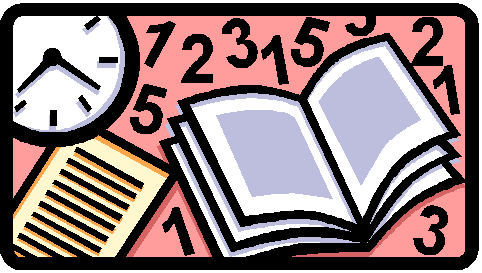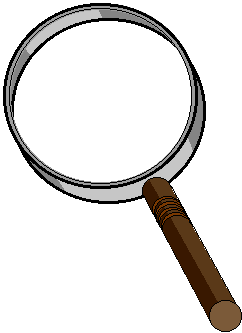
How to Use Reviews
As was said before, the ideal way for a librarian to select materials for the library is through the use of objective reviews of the materials. In the last section, we mentioned a number of possible review sources. Most of these review sources include hundreds of reviews in each issue. If you have the time to read all of these reviews, it is a great way to know what is being published and can help you with reference and readers' advisory responsibilities. But librarians seldom have time to read them all. As a result, librarians often get behind on their materials selection responsibilities, and materials are ordered late or not at all.

So what are the best ways to use review sources and the reviews they contain?
First, if possible, create a process that divides the work of materials selection among several people. In a one-person library, of course, this may not be possible, but most libraries can make some division in materials selection responsibilities. In small public libraries, one person may select materials for adults and another may select children's materials. In larger libraries, divisions may be made between fiction and non-fiction or even among different subject areas.

Second, know what you are looking for, and go there first. If you are only responsible for selecting juvenile materials, concentrate on these, and don't spend time looking at adult materials. If it is your policy to purchase everything on the bestsellers list, or everything written by certain very popular authors, there is no reason to spend a lot of time with the reviews of these materials. If you are concentrating on a specific subject area, most review sources divide their reviews along subject lines, so turn to your subject first; then if you have time, go back to look at other materials.

Third, use the standard formats of the reviews to save time. Review sources normally give basic publishing information about materials in a heading for the review. Information includes author, title, publisher or producer, date, and price. For print resources there often is information on pagination, illustrations, and the presence of a bibliography and indexing. For non-print resources, it may also include format information and time for viewing or listening. Here are some examples:
From Booklist:
Franck, Irene M. and Brownstone, David M. Illustrated
History of Women. 10v. 1999. Ea. vol: index, illus, 120p. Grolier,
lib. ed., $295 (0-7172-7497-7). DDC: 305.4.
This is a ten volume set aimed at high school age readers. (It was listed in the high school section.) Each volume is indexed and illustrated and 120 pages long. Its cost is $295. The information also includes the ISBN (0-7172-7497-7) and the Dewey classification number (305.4).
From Library Journal:
Alison, Jane. The Love-Artist.
Farrar. Apr. 2001. c.256p. ISBN 0-374-23179-6. $23.
This is a pre-publication review of a book of fiction. It was listed in the fiction section some months before the book was published. The Apr. 2001 shows the anticipated publication date. The book will be about 256 pages long and will cost $23. As you can see the ISBN is included.
From The Hornbook:
Franklyn
M. Branley The International Space Station; illus. by
True Kelley
40 pp. HarperCollins 9/00 ISBN 0-06-028702-0 16.95 g
Library edition ISBN 0-06-028703-9 16.89
(Primary)
This is a primary school book, 40 pages long. It is illustrated, and was published in September of 2000 (9/00). Hornbook has listed both the retail cost and the cost to libraries for an edition with special library binding to help the book last longer. ISBN numbers for both editions are listed.
From Choice:
Ungerer, Horst. A concise history of European monetary integration: from EPU to EMU. Quorum Books, 1997. 338p bibl indexes afp ISBN 0-89930-981-X, $69.50
As would be expected from Choice, this is a academic book with bibliography and indexes; "afp" in Choice means that the book is published on acid free paper, an important consideration for academic libraries which expect to maintain items in their collections for long periods of time.
From Video Librarian
George Wallace: Settin' the Woods on Fire *** 1/2
(1999) 2 videocassettes. 174 min. $29.98 ($79.95
w/PPR). PBS Video (800-344-3337; www.pbs.org). Color
cover. Closed captioned. ISBN: 0-7806-3142-0.
This is a review of a video program on two cassettes, lasting 174 minutes. The tape got a rating of 3 1/2 stars out of a possible four. It costs $29.98 normally, but if you would like to have public performance rights (the right to show the tape to an audience) it costs $79.95. It is in color and closed captioned for the deaf.

By reading the information in the review heading carefully, you may be able to eliminate some materials without reading the review as a whole. Obviously the title may eliminate an non-fiction item. Most small school or public libraries, for example, would not be interested in A Concise History of European Monetary Integration: from EPU to EMU. They simply would not have the audience to justify the purchase of this kind of book.
Price may also be a factor in removing an item from possible
consideration. Illustrated
History of Women may be an item that many
libraries would be interested in, but the cost of $295 may not be
affordable. A library that needed material on this subject might skip this
title and look for a one-volume resource that would be cheaper, but probably not
as comprehensive.
The number of pages may also help a librarian decide whether to look more thoroughly at a review. The fact that The International Space Station only has 40 pages may show that the book is too elementary to meet the need that the librarian wishes to address.
The information on illustrations and indexes can also help you to decide whether to look at an item further. Typically, non-fiction items without these tools are less valuable than those with them.

Finally, when you have determined the items that could be of most interest to you, you can read the rest of the reviews. In particular, you are looking for strengths and weaknesses of the materials you are considering. Reviews will give you the gist of the plot of novels as well as the setting and major characters. Based on this information you can tell whether the book would be of interest in your community. In non-fiction, it will give you the point of view of the material and normally will point out any particular strengths the item has.
Reviewers will often state weaknesses of an item, even if they are generally favorable to it. For example, if a reviewer says, "A serious drawback is the lack of source notes, even for direct quotes, and the bibliography is uneven," that is an important clue that the book will not be particularly useful as a research tool, even though it might otherwise be recommended. Some review sources, such as LJ and SLJ will tell you that they do not recommend a particular item, and they will tell you why.
Click the
arrow below to continue to the next page